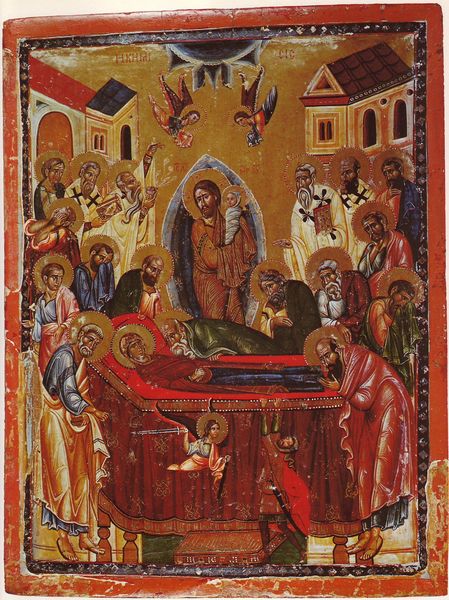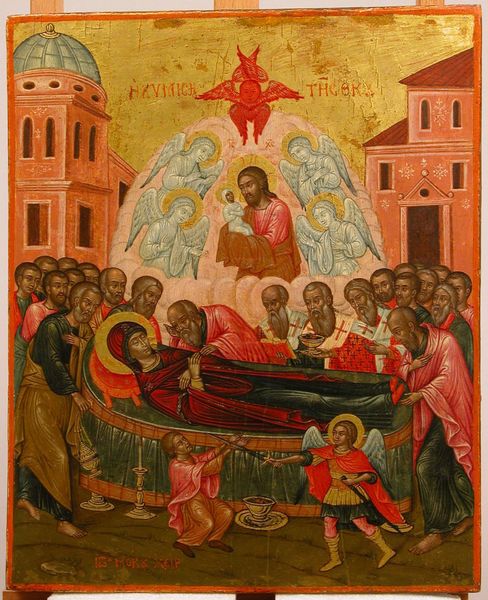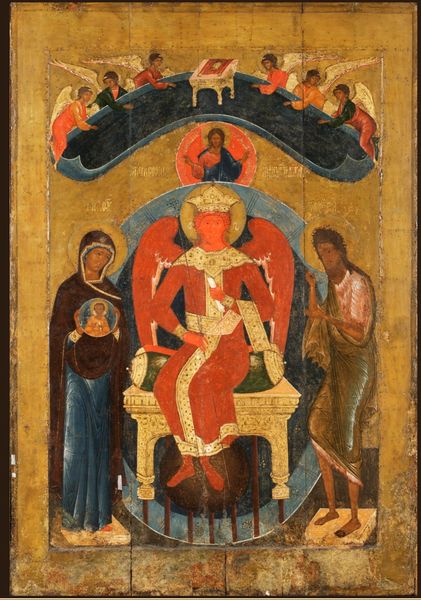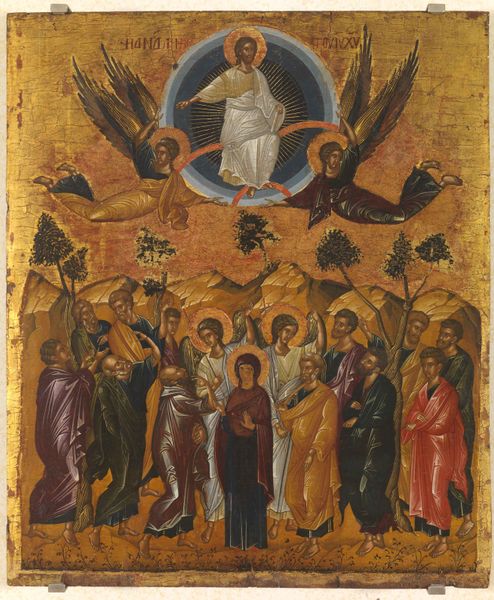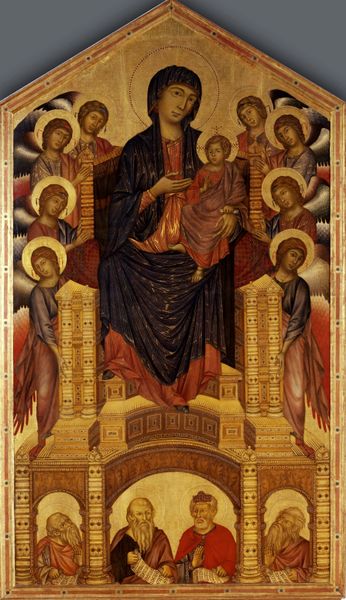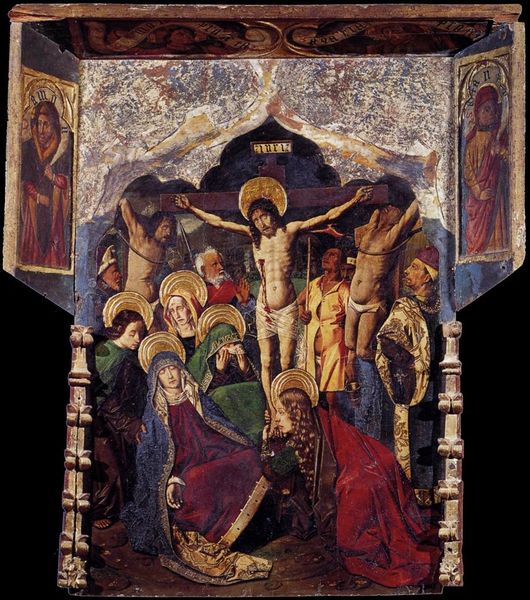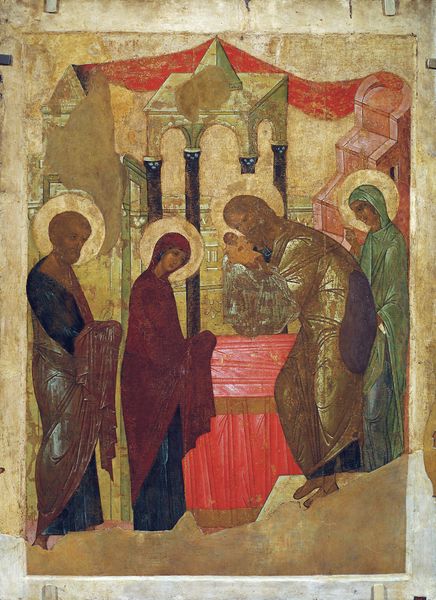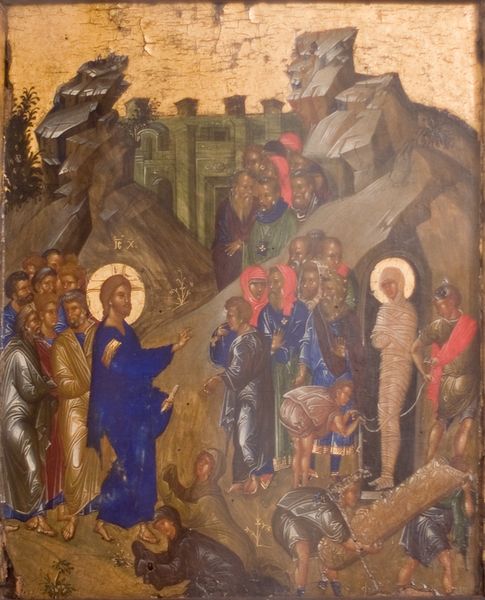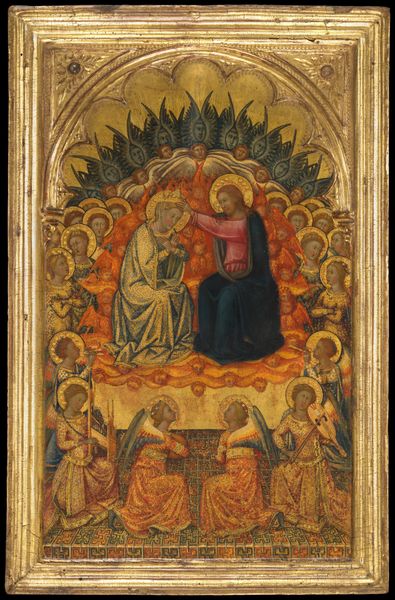
tempera, painting, oil-paint
#
byzantine-art
#
medieval
#
tempera
#
painting
#
oil-paint
#
gothic
#
figuration
#
oil painting
#
history-painting
Copyright: Orthodox Icons,Fair Use
Editor: This is the "Dormition of Virgin Mary," a tempera and oil painting from around 1500. It's such a striking piece! The gold leaf really catches the light, and everyone seems to be floating. What exactly are we seeing here, beyond the obvious? Curator: Floating is the right word! It feels like stepping into a dream, doesn't it? It's a layered story, really. We see Mary, surrounded by those who loved her – apostles, grieving figures. Above, she’s being received into Heaven, body and soul, an event rendered as another little Mary within the mandorla carried by angels. And then there's Christ...holding a small childlike figure… who could that be? Editor: Hmm, that's interesting... I had assumed that all figures surrounding Mary belong to this world, while the upper ones reside in the Heavenly world. You think it's the same story at two points in time? Curator: Not exactly, but iconographic tradition does something magical with time here. Notice how it flattens everything out – compresses past, present, and future into one simultaneous moment. As if one frame captured eternity. Like trying to fit the cosmos into a teacup! Is that making sense? Editor: Kind of. So it's not a literal depiction of a single event, but more of a symbolic representation of a core belief... a sort of "both/and" situation rather than an "either/or?" Curator: Precisely! It's Byzantine art at its finest - aiming straight for the soul, bypassing logical explanations. Consider also that harsh perspective and those strange architectural constructions... they work to take our minds out of natural space. More food for thought, wouldn’t you agree? Editor: Definitely! It’s funny, at first glance it just seemed like a historical painting, but now it feels much more complex and alive, reaching across time and belief. Thank you. Curator: The pleasure's all mine! It reminds me that truly great art keeps giving, unveiling layers each time we encounter it. Until next time!
Comments
No comments
Be the first to comment and join the conversation on the ultimate creative platform.
